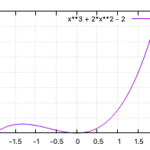\multicolumn を使って、結合する行の成分の数を指定することができる。
次の例では「3」を指定して、結合している。
例
\begin{table}
\begin{tabular}{ |c|c|c|c| }
\hline
\multicolumn{3}{|c|}{line 1} \\
\hline
A & B & C\\
\hline
\end{tabular}
\end{table}
結果

雑記
投稿日:
\multicolumn を使って、結合する行の成分の数を指定することができる。
次の例では「3」を指定して、結合している。
\begin{table}
\begin{tabular}{ |c|c|c|c| }
\hline
\multicolumn{3}{|c|}{line 1} \\
\hline
A & B & C\\
\hline
\end{tabular}
\end{table}

執筆者:seyanen
関連記事

multirow パッケージを使っておき、表内で multirow で入力する。 例 \usepackage{multirow} \begin{document} \begin{table} \beg …

テキストを \flushright で囲めば良い。 例 \begin{flushright} Lorem, ipsum dolor sit amet consectetur adipisicing e …

python3 で、文字列を一文字ずつのリストに変換する方法
string を list() で変換すれば良い。 例 str1 = ‘Good morning.’ list1 = list(str1) print(list1) 結果 [‘G’, ‘o’, ‘o’ …

2023/01/18
matplotlib のグラフ作成と gnuplot との対応 比較

2022/10/14
pythonで配列(リスト)の、ある要素がわかっているときにその次の要素を取得する方法。